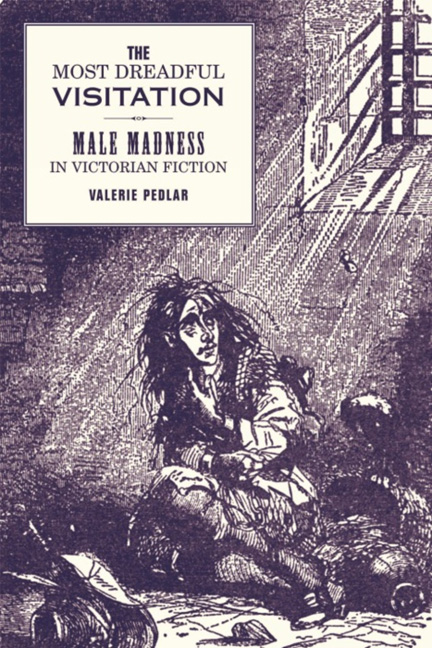Book contents
- Frontmatter
- Dedication
- Contents
- Acknowledgements
- Introduction
- 1 Insurrection and Imagination: Idiocy and Barnaby Rudge
- 2 Thwarted Lovers: Basil and Maud
- 3 Wrongful Confinement, Sensationalism and Hard Cash
- 4 Madness and Marriage
- 5 The Zoophagus Maniac: Madness and Degeneracy in Dracula
- Conclusion
- Bibliography
- Index
Introduction
- Frontmatter
- Dedication
- Contents
- Acknowledgements
- Introduction
- 1 Insurrection and Imagination: Idiocy and Barnaby Rudge
- 2 Thwarted Lovers: Basil and Maud
- 3 Wrongful Confinement, Sensationalism and Hard Cash
- 4 Madness and Marriage
- 5 The Zoophagus Maniac: Madness and Degeneracy in Dracula
- Conclusion
- Bibliography
- Index
Summary
In 1842, whilst he was staying in New York, Charles Dickens visited a lunatic asylum on Long Island or Rhode Island (‘I forget which’). He depicts the scene graphically:
The moping idiot, cowering down with long, dishevelled hair; the gibbering maniac, with his hideous laugh and pointed finger; the vacant eye, the fierce wild face, the gloomy picking of the hands and lips, and munching of the nails; there they were all, without disguise, in naked ugliness and horror.
In part his horror at the sight of these mad people is inspired by the dreary, dirty, ill-ordered conditions in which they are kept. These inmates are people on whose minds has fallen ‘the most dreadful visitation to which our nature is exposed’, and they need and deserve a wholesome and stimulating environment if they are to be restored to full humanity. Madness for nineteenth-century writers was both an alien state of mind and something that could afflict ‘our nature’ at any time. Imaginatively, therefore, it offered opportunities to explore the extremities of human mental and emotional suffering, uniting the fascination of the strange and the abnormal with the familiarity of the known and the shared. Since madness denotes a dissonance between the individual and society, it provides a channel for the exploration of moral dilemmas, focusing on the issues of egoism and self-control. But since it also denotes individual suffering, moral judgement must be qualified by sympathy, respect and understanding. ‘Madness’ is a term more common in literary than in medical usage, but the conditions it describes are not simply literary conditions. Imaginative representations of madness are inevitably influenced by cultural conceptions of insanity, whether they are medical, juridical, philosophical, or a composite that has entered into popular currency. In this book I shall be looking at a variety of fictional texts which figure mad men. My main focus is on the way that madness functions in the texts and on what the representation of madness in men reveals about contemporary fears, insecurities and ambiguities concerning the state of manhood. This introductory chapter provides the background for that investigation, summarising the changes in nineteenth-century concepts and treatments of insanity, the gendering of madness and the way in which the representation of madness is related to fictional genres.
- Type
- Chapter
- Information
- The Most Dreadful VisitationMale Madness in Victorian Fiction, pp. 1 - 26Publisher: Liverpool University PressPrint publication year: 2006



